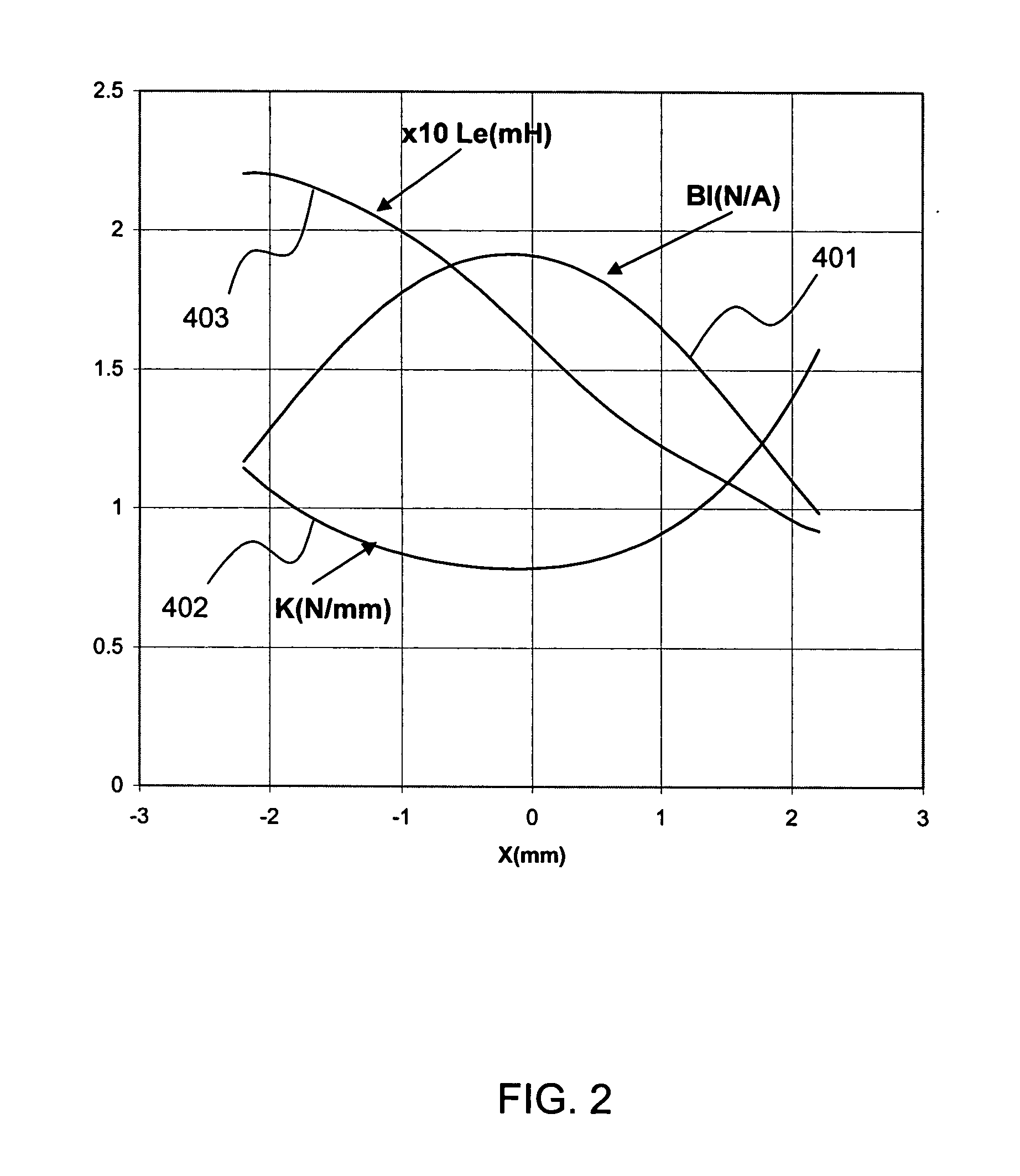Mixed-mode (current-voltage) audio amplifier
a current-voltage, mixed-mode technology, applied in the direction of amplifier combinations, low-frequency amplifiers, electrical transducers, etc., can solve the problems of less uniform coil movement and sound wave distortion, further nonlinearity, and limited uniform static magnetic field size, so as to reduce voltage and current distortion, reduce current distortion, and more even output sound response
- Summary
- Abstract
- Description
- Claims
- Application Information
AI Technical Summary
Benefits of technology
Problems solved by technology
Method used
Image
Examples
Embodiment Construction
[0047] The present invention relates to audio amplifier design. The following description is presented to enable one of ordinary skill in the art to make and use the invention and is provided in the context of a patent application and its requirements. Various modifications to the preferred embodiments and the generic principles and features described herein will be readily apparent to those skilled in the art. Thus, the present invention is not intended to be limited to the embodiments shown, but is to be accorded the widest scope consistent with the principles and features described herein.
[0048] This present invention provides a mixed-mode (current-voltage) audio amplifier for use that has an effective output impedance that varies as a function of input frequency from nearly zero ohms to thousands of ohms. At certain frequencies, the mixed-mode amplifier may operate with high impedance, thereby acting substantially as a current amplifier, and at other frequencies, it may operate...
PUM
 Login to View More
Login to View More Abstract
Description
Claims
Application Information
 Login to View More
Login to View More - R&D
- Intellectual Property
- Life Sciences
- Materials
- Tech Scout
- Unparalleled Data Quality
- Higher Quality Content
- 60% Fewer Hallucinations
Browse by: Latest US Patents, China's latest patents, Technical Efficacy Thesaurus, Application Domain, Technology Topic, Popular Technical Reports.
© 2025 PatSnap. All rights reserved.Legal|Privacy policy|Modern Slavery Act Transparency Statement|Sitemap|About US| Contact US: help@patsnap.com



